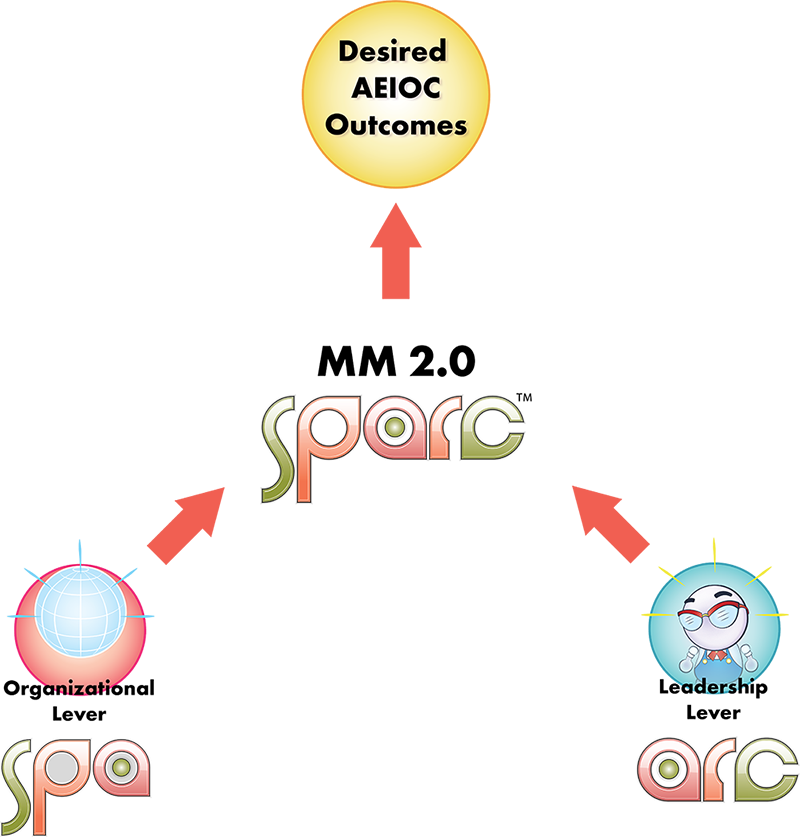Matrix Management Wiki
Home » Introduction » 1J. The Five Keys to Implementing Matrix Management 2.0
- 1J1. The MM 2.0 OS can be broken down into five key component areas that need your attention in order to successfully implement the MM 2.0 OS. These five keys are called SPARC:
- 1J1i. S – Structure
- 1J1ia. Structuring the horizontal and vertical dimensions. Goal deployment.
- 1J1ii. P – Productivity
- 1J1iia. Enabling the productivity of teams. Optimizing the organization. Prioritization at the organizational level.
- 1J1iii. A – Accountability
- 1J1iiia. Adopting the proactive, commitment-based accountability system which is pivotal to making all the other keys work.
- 1J1iv. R – Relationship Management
- 1J1iva. Building and managing relationships within the matrix.
- 1J1v. C – Collaborative Leadership
- 1J1va. Adopting leadership methods, style, decision making, and practices that create cooperation, commitment, and buy-in.
- 1J2. The keys can be combined into two levers that help an organization implement MM 2.0:
- 1J2i. The Organizational Lever refers to the changes needed at the enterprise/organizational level. These changes shift the management systems that run the organization from VM 1.0 to MM 2.0.
- 1J2ia. Using the Organizational Lever means focusing on the SPA Keys—Structure, Productivity and Accountability—to make changes at the organizational level.
- 1J2ii. The Leadership Lever refers to the changes that individual leaders must make in how they lead teams and vertical areas.
- 1J2iia. The Leadership Lever uses the ARC Keys to effect changes in individual teams.
- 1J2iii. Accountability is the pivotal key; as such, it is included in both the Organizational and Leadership Levers.
- 1J2iv. Using the levers to make changes will enable an organization to achieve the desired AEIOC outcomes outlined in 1D2.
- 1J3. Figure 1.6. Diagram showing the relationship between AEIOC, SPARC Keys, and the SPARC Key levers.


